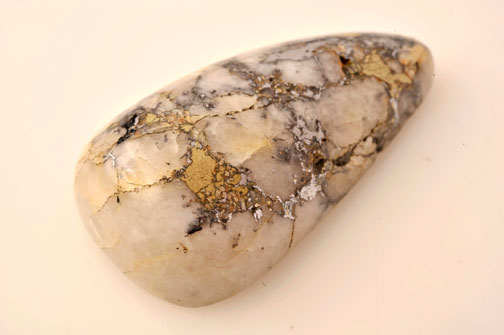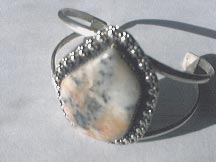Due to thousands of years of mankind's
efforts to extract pure gold from the rock by grinding the rock and
destroying it, very little remains. Visible gold and silver in quartz is
fetching 20 to 100 times the price of pure bullion, and is ever
increasing in value.
Hygraders pay huge lease fees to major
corporations for specimen collecting on a small scale, but with massive
mining procedures the majority of the material is destroyed, as it was in past centuries.
A few small sources offer a variety of
colors and types, but with no major amounts available. Usually
collectors quickly acquire anything that hits the market.
Only two major commercial sources exist today: the 16-to-1 Mine in Califomia and the Gimpie Mine in Australia.
Recent opening of the old John J.
Astor Mine, that was sealed when he went down with the TItanic, now
offers a gold in pink quartz.
Celebrity Mine ownership with a
provenance is now the new pick of collectors. The law of supply and
demand is calculated in millions of tons of destruction in mining
worldwide, ever increasing the rarity and value.
Recent reports by reputable sources
state that with increasing demand and availability, prices are becoming
almost prohibitive for the average consumer.
No known source of silver in quartz is known. Market price fetches $5 per carat ($11,350 per pound), better
than twice the price of pure gold bullion.
Many exotic stones will come and go,
but the precious noble metals in their native quartz embody the natural
origin of the two oldest commodities since the dawn of civilization:
gold and silver.
 Historian Flint Carter
Historian Flint Carter
About the Artist, Author
William Thomas Carter, "Flint" to his
friends, is an artist and author born in 1947 in Danville, Illinois.
After attending Danville High School, he served in Panama during the
Vietnam conflict at the Latin American Headquarters Post. He received
the National Defense and Good Conduct medals. Returning home, Flint
attended Danville Junior College and later Southern Illinois University.
Special interest in the design department, headed by Buckminster
Fuller, inspired the building of Arizona's first solar heated and cooled
museum.
Read more about Flint Carter, his jewelry, art and stories of the Old West and Iron Door Mine.



 RING
RING PENDENT
PENDENT BRACELET
BRACELET